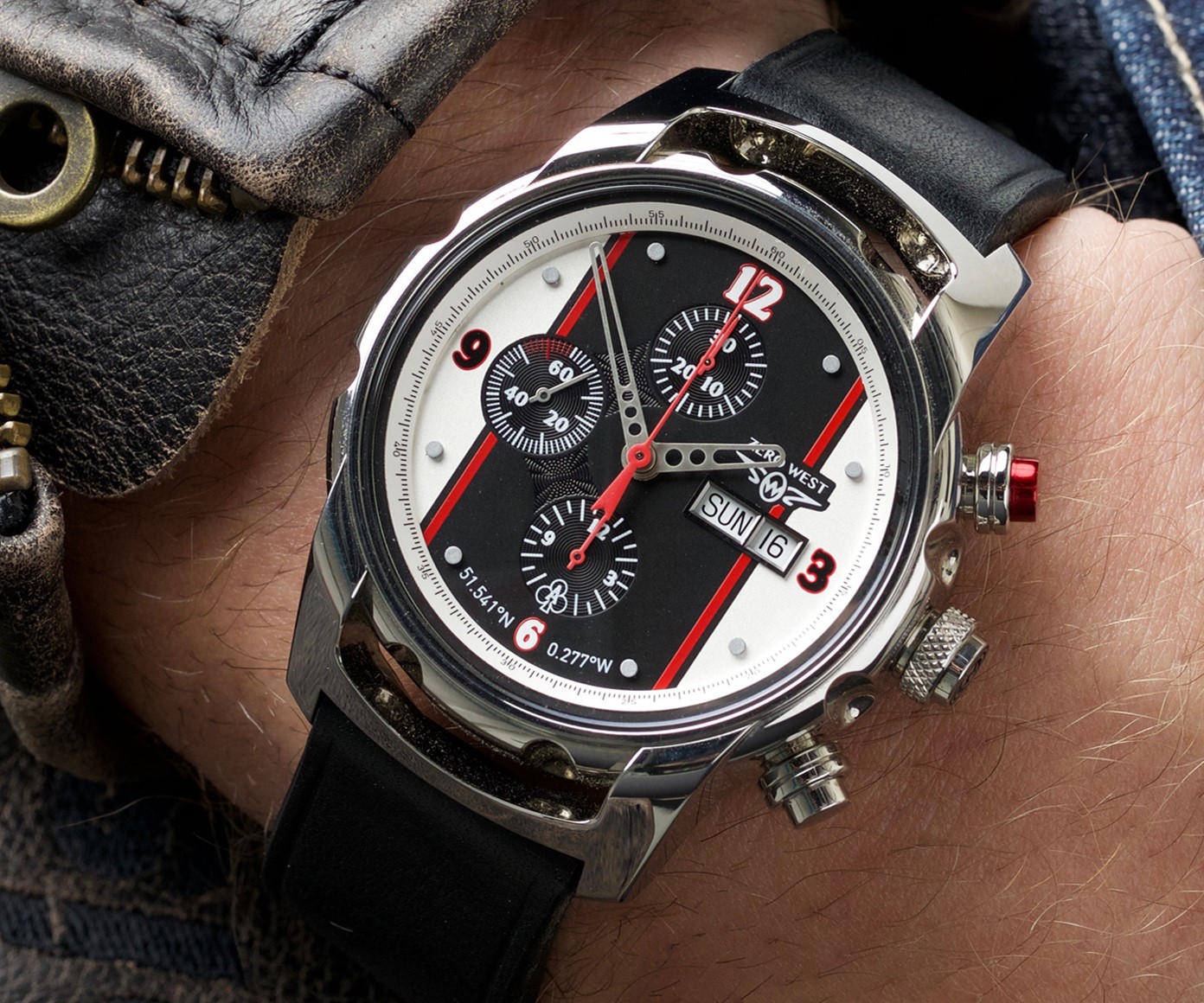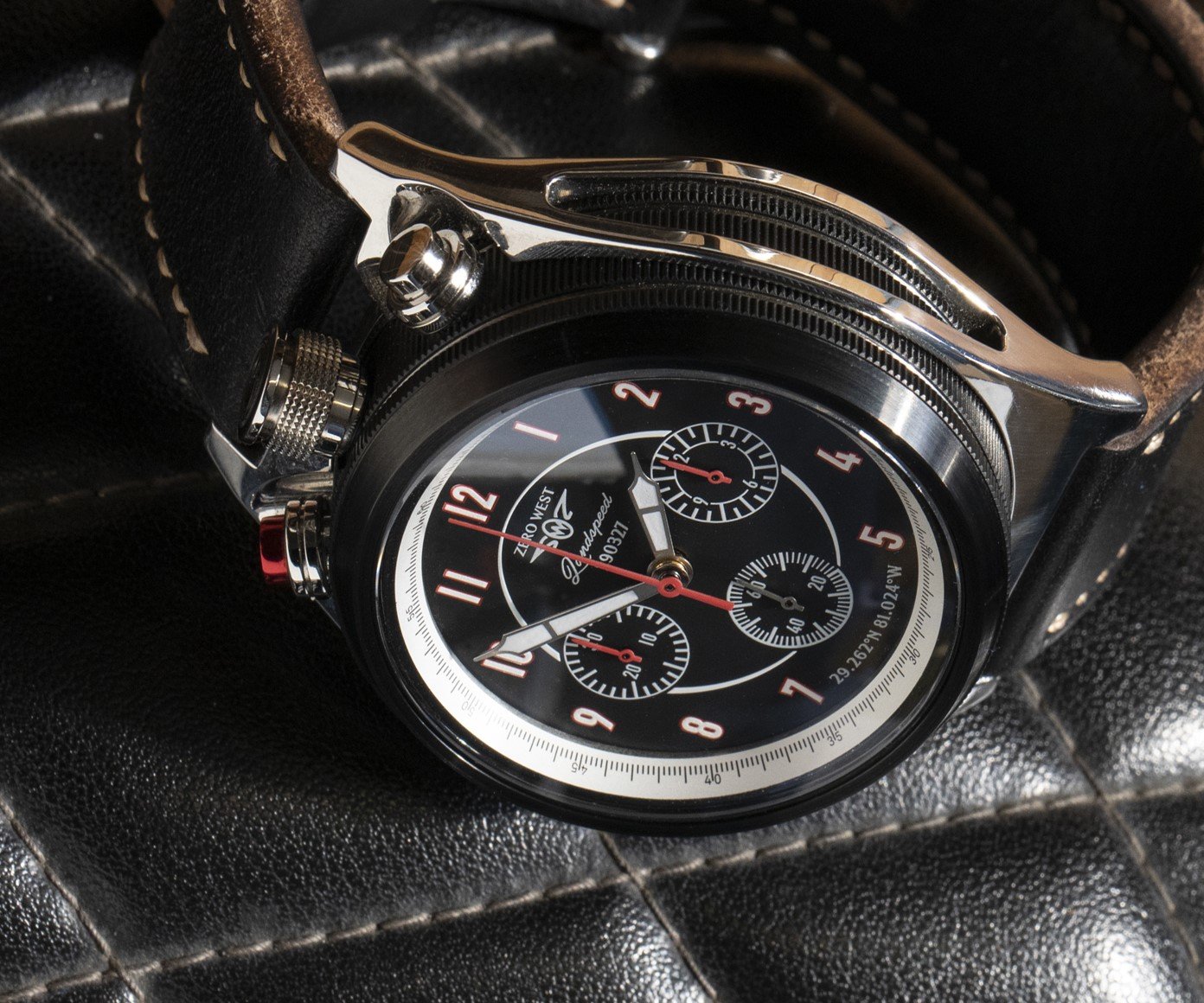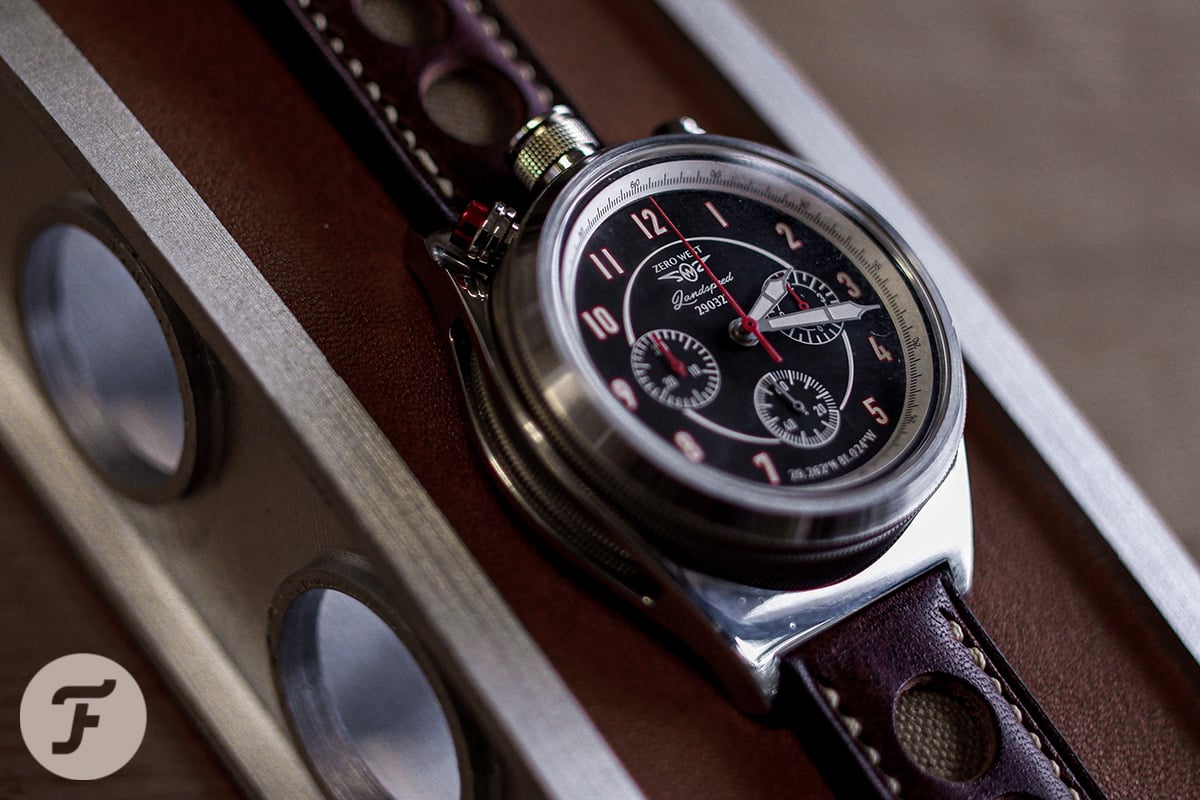Inside the Studio: A Day Out with Zero West
Don’t feel guilty for not knowing about Zero West. It was only 2015 that the prototype dials started taking shape. Now with an ever-expanding collection that celebrates British engineering, Zero West is hitting its stride.
I had a brief introduction to the brand during an event in London. Designer Andrew Brabyn helpfully explained the backstory, and I was excited to go hands-on with a few pieces from Zero West. Still, a rowdy pub and many interested onlookers made it a challenge to get too familiar with the collection. Hence, I was thrilled to learn Zero West hailed from the South Coast of England — my neck of the woods. Specifically, Emsworth, a small coastal village situated about 10 miles from Chichester Harbour and the Goodwood Motor Circuit.
A Journey South
I made the short road-trip down from London with my camera and an iPad Pro, not knowing what to expect. The Zero West studio has a serene location that overlooks a millpond. A perfect locale for blue-sky thinking. But history tells us the studio — named The Old Boat House — was once a shadow factory for building fuselages in wartime. Shadow factories were small, re-purposed workshops used to ramp-up the war effort. Zero West draws on this past with a collection based around land, sea, and air.
All in the Name
The inspiration for Zero West’s name is from the coordinates of the Greenwich Royal Observatory. Longitude and latitude map out the surface of the world in grids and coordinates for celestial navigation. But with any scale, you must have a point of zero. In 1884, Greenwich was allocated as the starting point for the lines of longitude. Thanks in part to Greenwich dock carrying such naval and merchant importance. The direction is also West; therefore, Greenwich’s longitudinal position is Zero West (written as 0.00° W).
Zero West L1 Longitude
To pay homage to the history of longitude, Zero West created the L1 Longitude watch. The Roman numerals on the dial recall those of the H4 marine chronometer, developed by John Harrison. Building the H4 took Harrison six years. Once completed, the H4 was trialed from Portsmouth to Kingston, Jamaica, and maintained accuracy within only 5 seconds deviation in 1761. Even during extreme temperature changes and rough seas. Accurate marine chronometers aboard ships were pivotal in maritime navigation. Zero West also drew from the colorway of the H4 with blue enamel hands.
Every Zero West watch has the co-ordinates printed on the dial for the location in which it is based.
My favorite feature is the case construction of the 44mm 316L case. It reminds me of the housing of the H4 chronometer that would connect it to the shock-proof wooden and glass box in the ship’s nav table. Printed on the thin, white enamel dial above the 12 o’clock position are the coordinates of Greenwich. Balancing the coordinates below 6 o’clock is the date and year all countries agreed that Greenwich was the starting point of longitude. Powering the 20-piece limited Longitude L1 is the venerable ETA 2824 with the date window at 3 o’clock. Read more here. Price: £1,995.
Zero West Café Racer
Now we jump ahead in time from the history of longitude to the motorcycle clubs of the 1960s. Café Racer was a post-war term given to souped-up motorbike riders who tore up and down the newly-built motorways in groups — specifically, the M1 between London and Watford. Illegal racing between 24/7 cafés was the order of the day, and occasionally, rival gangs would duel by tarmac or bare-knuckle. There was also an aspirational sense of freedom and counter-culture style that reflected in the rock ‘n’ roll music flooding the airwaves. These are the inspirations for the Zero West CR-1 Chronograph.
The white and black dial with red pinstripes resembles the custom bike designs that were personal to each rider. On the hour totalizer sub-dial is the Ace of Clubs, the symbol for the Ace Café. The Valjoux 7750 powers the CR-1 with day and date at 3 o’clock. The start/stop pusher for the chronograph function is color-coded in red to differentiate it from the steel reset pusher. Read more here. Price: £2,995.
Zero West LS-1 Landspeed
Shifting locations to the States is the LS-1 Landspeed. Daytona Beach may be famous for sun, sea, and silicone but it was a different story in the prohibition era. Miles of hard-packed sand and sunny weather made it ideal for high-speed record attempts. Since 1959, it has played host to the 24 hours of Daytona. Earlier, in 1927, British pilot-turned-racer, Henry Segrave took the 1,000 horsepower Sunbeam Mystery beyond the 200mph barrier, setting a land speed record. And the LS-1 Landspeed Chronograph takes inspiration from this momentous event.
Setting Records
The “Bullhead” style chronograph layout has the crown and pushers to the north side of the case. Very similar to the hand-held stop-clock timers that would’ve been used to measure the speed as it crossed the mile markers. The LS-1 dial features a 3-6-9 layout thanks to this bullhead design powered again by the Valjoux 7750. Another bonus for me is the lack of a date window keeping it symmetrical. Similar to the Café Racer discussed above is the red pusher for the start/stop actuation. Read more here. Price: £2,995.
Final thoughts
This was just a brief overview and introduction to a selection of Zero West watches. The straps are all made in-house to compliment the unique case shapes. Using thick cuts of carefully selected hides, Zero West is able to pair a bespoke strap to a customer’s individual style. A rare feat for a watch brand to make its own straps, but Zero West sets high standards to match its unique case shapes. Those cases are generally quite large though, but entirely wearable. Like with anything, best to try before making assumptions based on specs alone. For an opportunity to go hands-on with the watches in London, Zero West will be at the London Watch Show in Canary Wharf on April 4th. Learn more on the Zero West site.
Follow me on Instagram @benjameshodges















